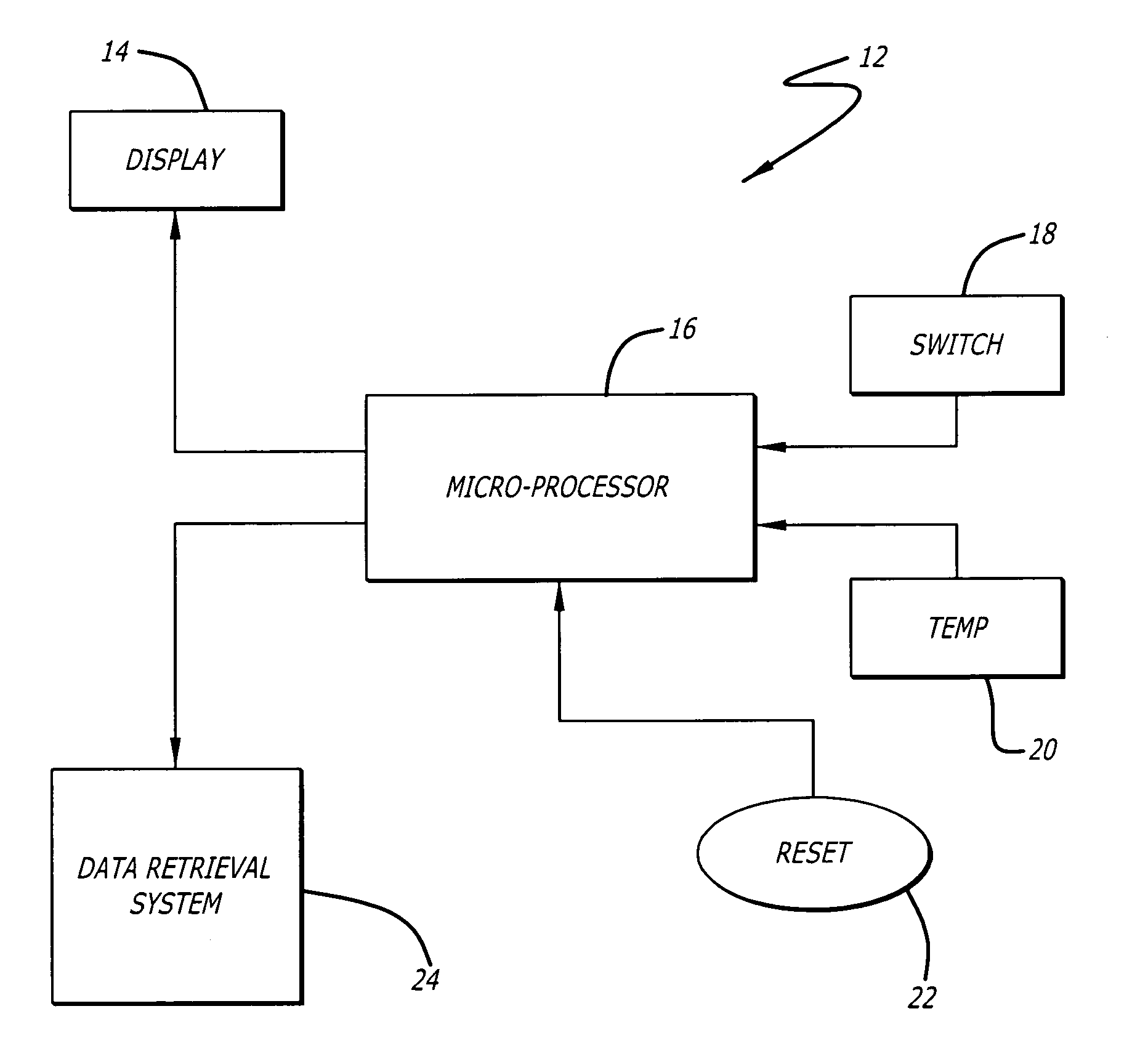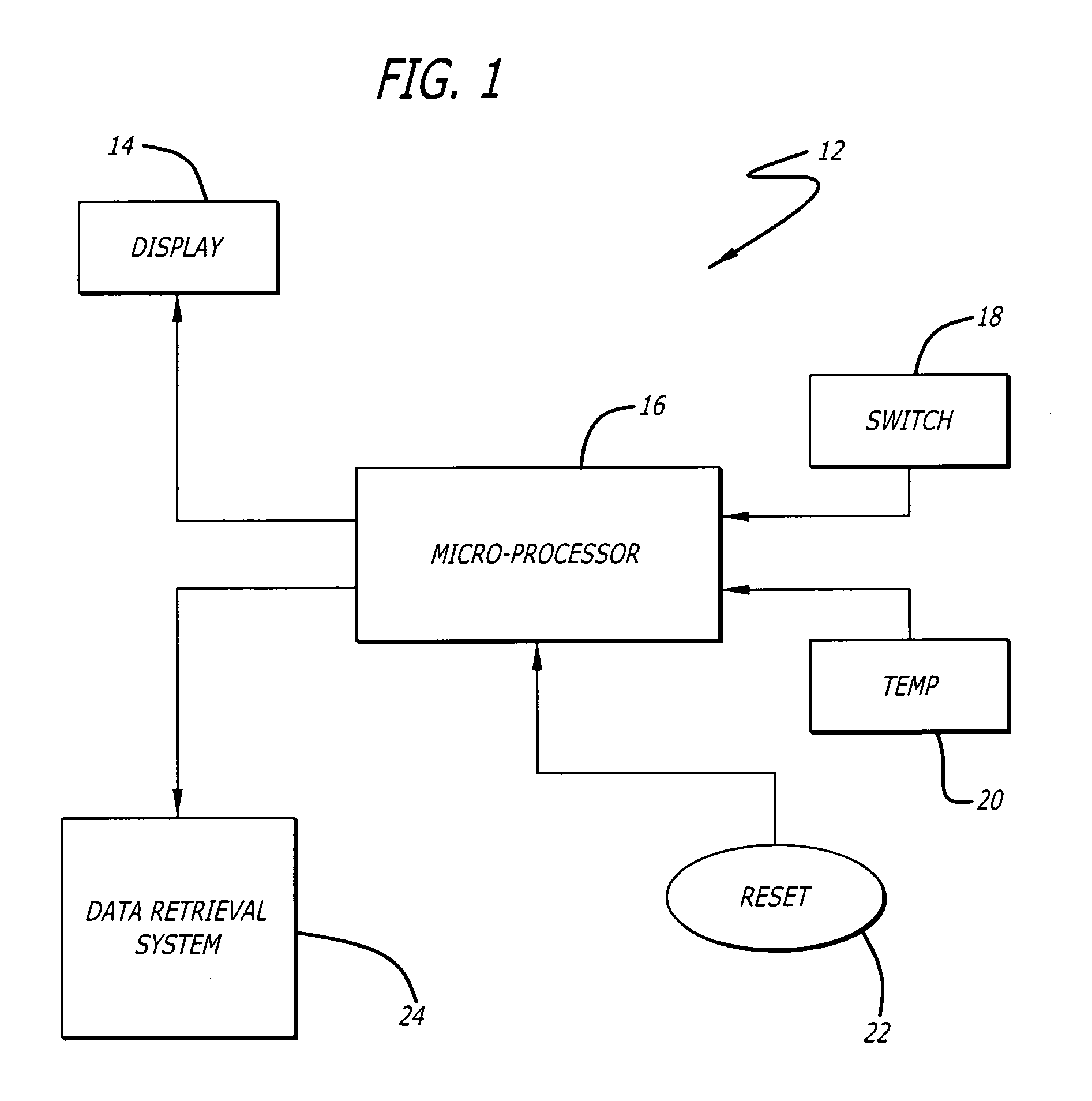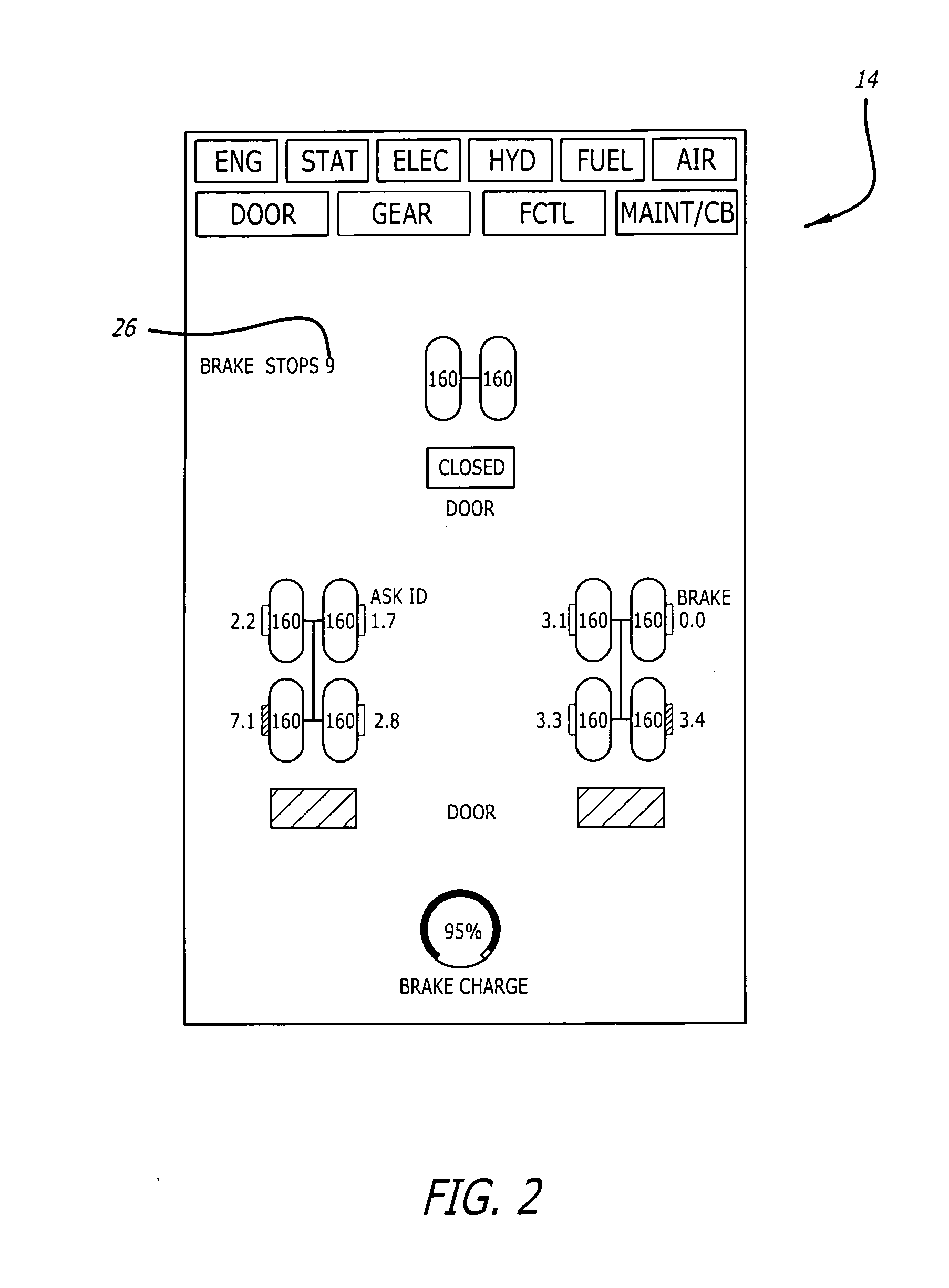System for reducing carbon brake wear
a carbon brake and wear technology, applied in the field can solve the problems of increasing the complexity and cost of aircraft braking systems, increasing the cost of replacing stacks as a function of landing cycles between replacements, and most wear occurring during taxiing. the effect of carbon brake wear
- Summary
- Abstract
- Description
- Claims
- Application Information
AI Technical Summary
Benefits of technology
Problems solved by technology
Method used
Image
Examples
Embodiment Construction
[0012] The present invention serves to promote a more wear-efficient use of an aircraft's carbon brakes to the extent it keeps the pilot apprised of how many times the brakes have been applied as well as of their temperature. Knowing that carbon brake wear is substantially a function of the number of times the brakes are applied, a pilot will be more inclined to reduce the number of brake applications while braking harder during each use if he is aware of the brake application count in real time. Additionally, knowledge of the brake temperature will encourage the pilot to maintain heat in the brakes and to thereby reduce the number of applications when the brakes are below a threshold temperature.
[0013]FIG. 1 is a schematic illustration of a preferred embodiment of the present invention. The system 12 includes a display component 14 that is positioned on the flight deck. The display receives information from a microprocessor 16 that in turn receives signals from a switch mechanism ...
PUM
 Login to View More
Login to View More Abstract
Description
Claims
Application Information
 Login to View More
Login to View More - R&D
- Intellectual Property
- Life Sciences
- Materials
- Tech Scout
- Unparalleled Data Quality
- Higher Quality Content
- 60% Fewer Hallucinations
Browse by: Latest US Patents, China's latest patents, Technical Efficacy Thesaurus, Application Domain, Technology Topic, Popular Technical Reports.
© 2025 PatSnap. All rights reserved.Legal|Privacy policy|Modern Slavery Act Transparency Statement|Sitemap|About US| Contact US: help@patsnap.com



